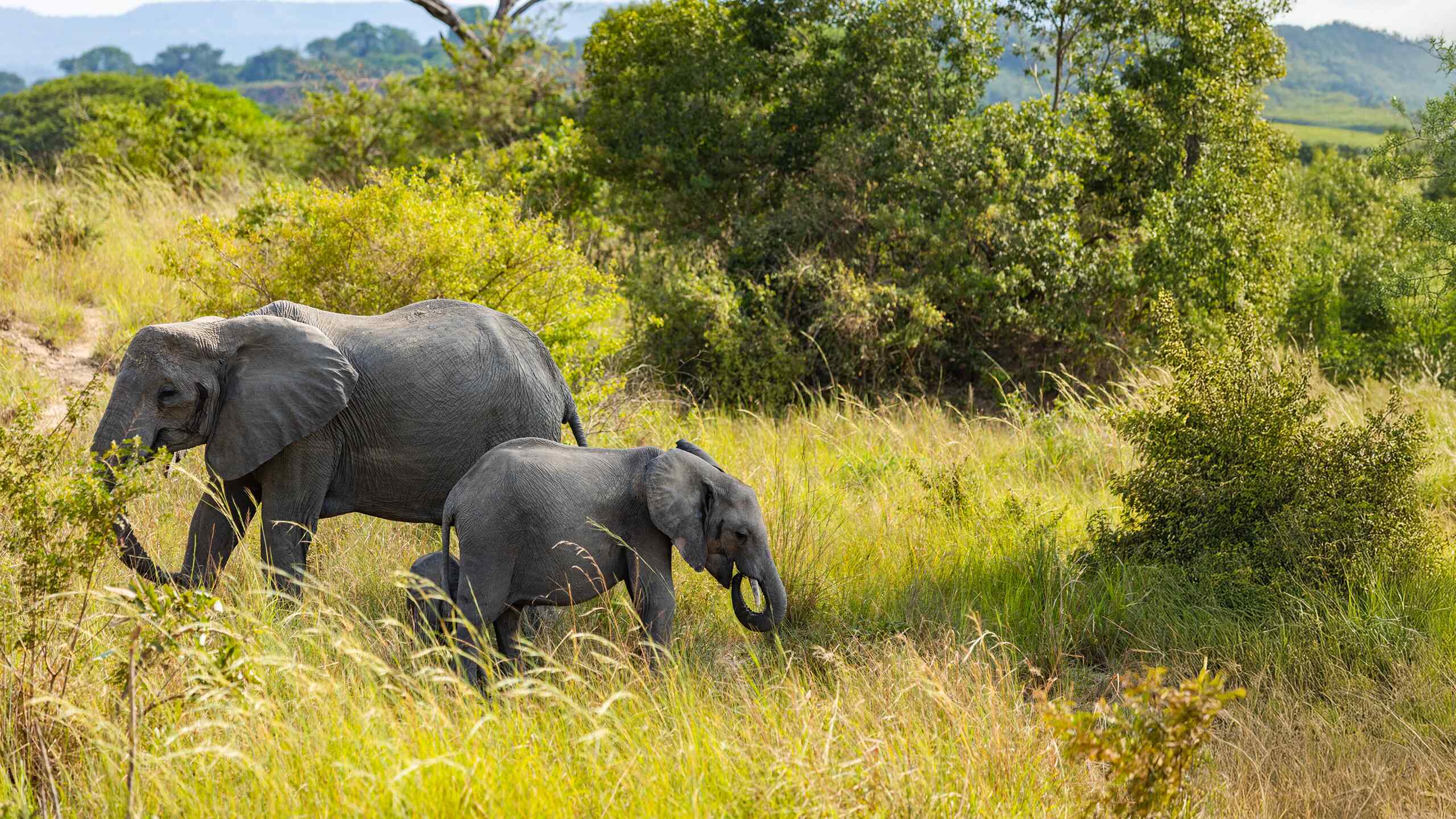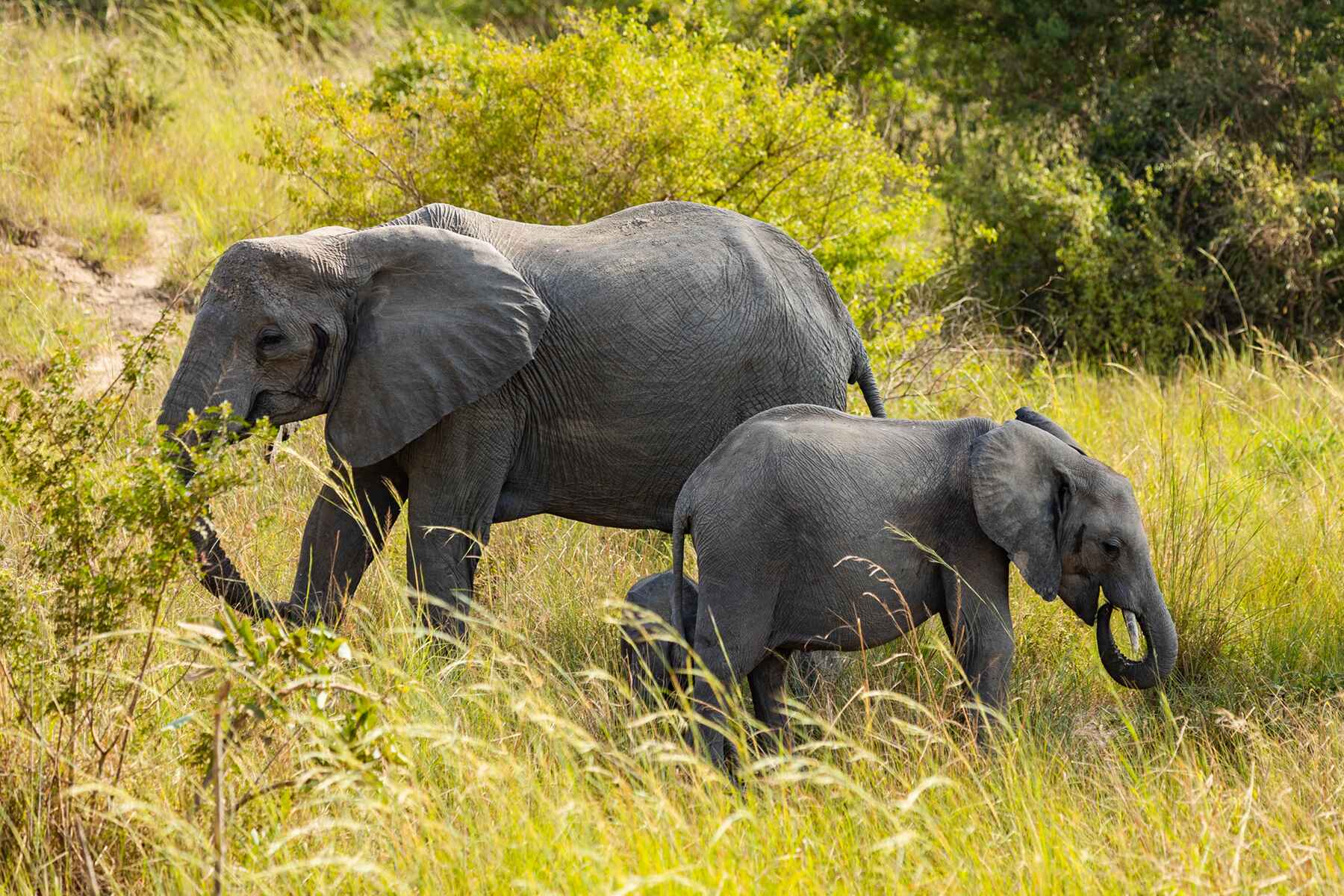Reforestation In
Uganda
A landlocked country split by the equator, Uganda has extraordinary biodiversity across its terrestrial and aquatic ecosystems. From the snow-capped Rwenzori Mountains to the Virunga Volcanoes, high latitude montane forests, 165 lakes (including Lake Victoria, one of the African great lakes), and eight major rivers (including the Nile), Uganda houses some of the world's most unique wildlife species. Species found there include mountain gorillas, chimpanzees, rhinos, elephants, and lions.
Uganda’s forests and biodiversity are threatened by rapid population growth, a growing demand for forest products across sectors, agricultural expansion, illegal settlements, and a low capacity for forest management. And with water pollution and rising temperatures, Uganda is experiencing profound climate change-related challenges. Deforestation and land degradation make it hard for agriculture to thrive, impacting local communities and wildlife alike. Reforestation in areas like Uganda can help restore landscapes and promote biodiversity.

Uganda Stats
3M
Hectares lost
From 1990 to 2018, Uganda lost 3 million hectares of forest cover.
Forest/Uganda, Interactive Country Fiches
5k
Chimpanzees
5,000 chimpanzees call the forests of Uganda home.
The Status of Chimpanzees in Uganda, Wildlife Conservation Society
88%
of energy
Uganda’s forests provide 88% of the country’s energy.
Forest/Uganda, Interactive Country Fiches
14%
of land area
Trees, forests, and woodlands cover about 14% of Uganda’s land area.
Status of forests in Uganda, African Journal of Ecology
18,783
Species of flora & fauna
Uganda has recorded 18,783 species of
flora and fauna.
Uganda has recorded 18,783 species of flora and fauna.
Uganda - Country Profile, Convention on Biological Diversity
Project Highlights
Uganda is full of natural beauty and diverse wildlife. Reforestation in Uganda helps restore its landscapes and promote biodiversity. Learn about three recent reforestation projects that planted trees in Uganda.

Albertine Rift
The Albertine Rift, stretching across east-central Africa, is home to tropical weather and high biodiversity. This region is a critical hotspot of African biodiversity, spanning several countries – including Uganda. This project seeks to support biodiversity by planting trees in the Budongo-Bugoma Corridor. With a population of over 1,000 chimpanzees between these two forests, trees will help restore the land and provide habitat for chimpanzees.
Paicho Nursery Hub
This project underscores the idea that trees have the power to break the cycle of poverty and create income for rural farmers. They provide food, fuel, livestock fodder, construction materials, and ultimately economic mobility for farmers into an industry that has seen increasing demand and decreasing supply.


Palorinya Refugee Settlement
In Uganda’s Palorinya Refugee Settlement, an estimated 14.7 million trees were cut between 2015-2018. If trends were to continue at this rate without intervention, Palorinya would have had no remaining tree cover by 2023. By planting trees to restore forest cover across this settlement, this project fostered many community and environmental benefits.


